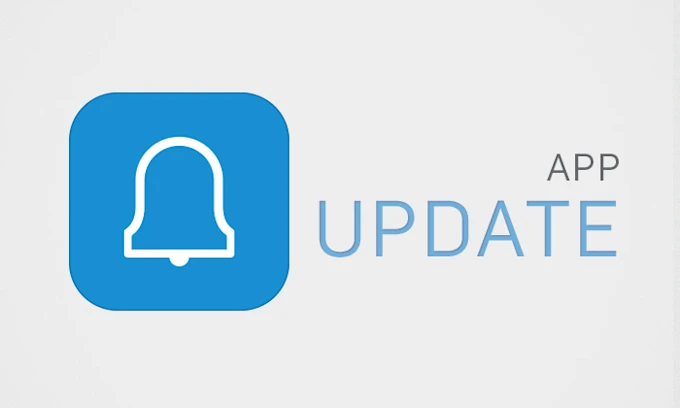In today’s fast-paced digital world, mobile apps have become an integral part of our daily lives. From social media platforms to productivity tools, banking apps, and entertainment, apps make everything accessible with just a few taps. However, the functionality of these apps doesn’t remain constant. Developers are constantly working to improve user experiences, fix bugs, and enhance security through a process known as app updates. While some users might find frequent updates bothersome, they are crucial to maintaining the performance and safety of the apps we rely on.
In this article, we will explore the various aspects of app updates, their significance for users, and how they contribute to an app’s longevity.
1. What Are App Updates?
App updates are revisions made by developers to enhance an app’s functionality, fix bugs, improve security, or introduce new features. Updates can range from minor patches, which fix small bugs, to major overhauls that significantly alter the app’s interface and functionality. For users, updates can appear as simple notifications on their devices, prompting them to download the latest version.
Developers issue app updates for various reasons, and each update is a step toward improving the user experience. Users often wonder if they should install updates as soon as they are available or ignore them until necessary. Understanding the reasons behind these updates can help clarify the benefits they offer.
2. Performance Enhancements
One of the primary reasons for app updates is to improve the app’s overall performance. As developers gather feedback from users and analyze how the app operates across various devices, they can identify areas for improvement. These enhancements could involve optimizing load times, improving battery consumption, and ensuring smooth multitasking across different operating systems.
For instance, an app that frequently crashes or experiences lag can frustrate users. To resolve this, developers issue updates to streamline the app’s processes, improving responsiveness and overall functionality. Ignoring these updates may leave you with an app that is slow, buggy, and prone to glitches.
3. Bug Fixes
Even the most well-developed apps encounter bugs and glitches. These may arise from coding errors, unforeseen interactions with other software, or updates in the operating system itself. Bugs can range from minor inconveniences, such as layout issues, to major malfunctions that make the app unusable.
App updates often address these issues through bug fixes. Developers collect feedback from users, use diagnostic tools, and monitor the app for performance issues. When bugs are identified, updates are released to fix them. By updating apps regularly, users can ensure they are getting the best possible performance with minimal issues.
Read More: https://instanavigation.blog/palworld-activeunko/
6. Introducing New Features
App updates often bring exciting new features designed to improve the user experience. Whether it’s a social media app introducing new communication tools or a gaming app adding fresh levels and challenges, updates can breathe new life into an app.
Developers are always looking for ways to enhance their apps and keep users engaged. By adding new features, they aim to improve user satisfaction and stay competitive in the ever-growing app market. However, these new features are only available to users who have installed the latest version of the app.
For instance, a fitness app might introduce new workout plans, tracking features, or compatibility with wearable devices. These updates can significantly improve the app’s utility and allow users to get more out of it.
7. Enhanced User Interface and Experience
User interface (UI) design is critical to an app’s usability and attractiveness. Over time, developers may find new ways to improve the interface based on user feedback, emerging design trends, or changes in how users interact with apps. Updates that focus on improving UI may simplify navigation, increase accessibility, and make the app more aesthetically pleasing.
These changes aren’t always drastic. Sometimes, subtle adjustments like a more responsive layout, improved animations, or easier access to settings can make a world of difference. When developers listen to user feedback, they can make updates that improve the overall user experience (UX), making the app more intuitive and enjoyable.
8. Fixing Security Vulnerabilities in Third-Party Libraries
Many apps rely on third-party libraries and tools to function. These libraries often handle complex tasks like image processing, database management, or encryption. However, just like the apps themselves, third-party libraries can contain vulnerabilities that hackers could exploit.
Developers closely monitor the security status of the libraries they use and issue updates to patch vulnerabilities when necessary. This is why users may notice that even if they haven’t encountered any issues, the app still receives an update. It is simply a matter of addressing potential risks in third-party code to keep the app secure.
9. Maintaining Market Competitiveness
In the highly competitive world of app development, staying relevant and competitive is crucial. Regular updates not only keep the app fresh but also demonstrate the developer’s commitment to maintaining and improving it. When users see an app that is frequently updated, it gives them confidence that the app is reliable and well-maintained.
On the other hand, apps that go long periods without updates may risk losing users. Outdated apps are often seen as unreliable, especially when they fail to integrate new features or address security concerns. Developers who keep their apps updated show that they are actively working to meet user expectations and maintain their app’s competitiveness in the market.
10. User Feedback and Continuous Improvement
Finally, one of the most important reasons for app updates is the feedback developers receive from users. Developers actively monitor user reviews, ratings, and complaints. This input helps them identify issues, prioritize fixes, and implement changes that improve the app.
In many cases, users might suggest features they’d like to see or point out areas that could be improved. By regularly updating the app, developers can show users that their voices are being heard, fostering loyalty and long-term app usage.
Conclusion
App updates are a crucial part of maintaining the performance, security, and relevance of any app. From bug fixes to performance improvements, security patches, and new features, updates play a vital role in enhancing the user experience. While it may be tempting to ignore them, staying up-to-date with app updates ensures a smoother, safer, and more enjoyable experience across all devices.
For news Updates visit: The Expotabs


